I was recently reading about the industrial designer Sir Kenneth Grange, who over a long career has been involved in the creation of an impressive range of household products in the UK, and beyond the home into post boxes, taxi cabs and train styling. He also was brought in by Kodak to refresh some camera designs such as the Instamatic. One of these was an update to the venerable Brownie series.
Made in England and launched in 1963, the Vecta is aesthetically and ergonomically a departure from preceding models, bringing at the time a much needed dose of fresh modern styling. It was superseded in 1965 by the Brownie 127 Third Model which I understand was the very last box camera Kodak manufactured, its production ending in 1967.
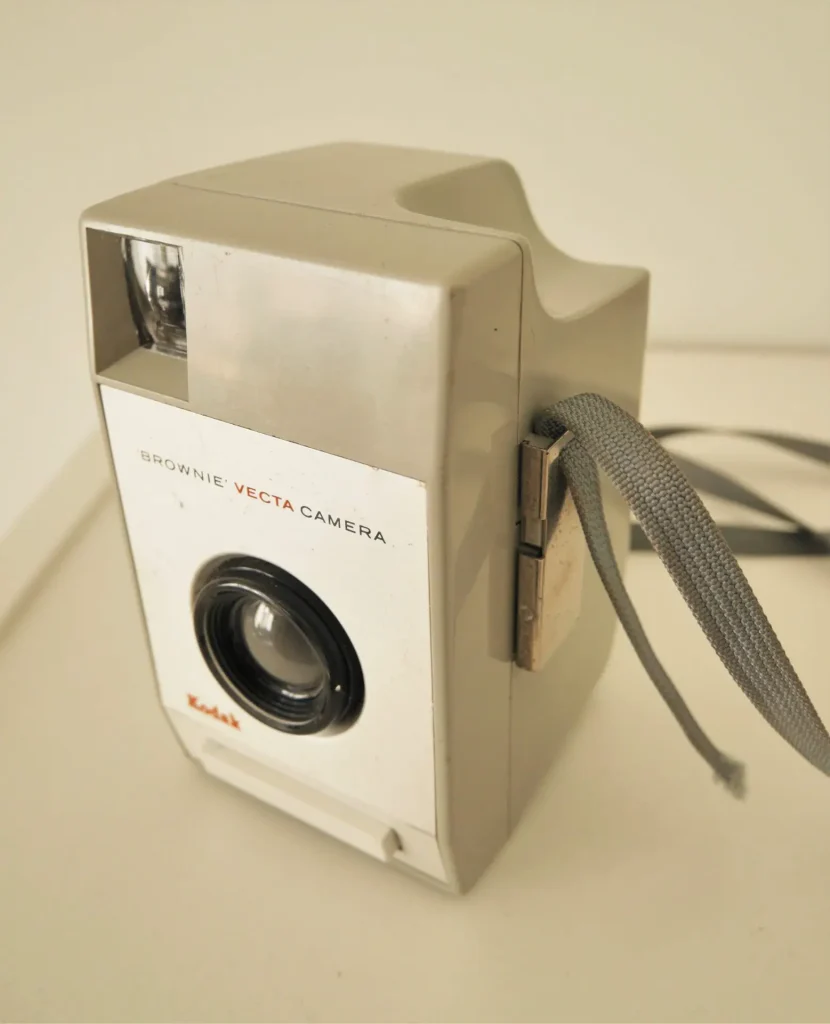
In the early 1960s the 127 film you loaded into the Vecta was still widely used, but 35mm film was beginning to make increasing inroads into the amateur market as more sophisticated 35mm cameras became available at reasonable prices. More importantly, Kodak’s Instamatic cameras using 126 cartridge films became massively popular internationally, as did the 110 format, so gradually 127 film was shoved out of the mainstream to become the niche product it is today.
The Vecta takes eight exposures in the 4 x 6.5cm vertical format, but of course there’s nothing to stop you tilting the camera through 90 degrees for a landscape view, which is what I did. The film is wound on in a conventional way by rotating the white knob on the side, each frame number printed on the film’s paper backing being visible through the red window at the rear. The mechanism is also designed to prevent double exposures.
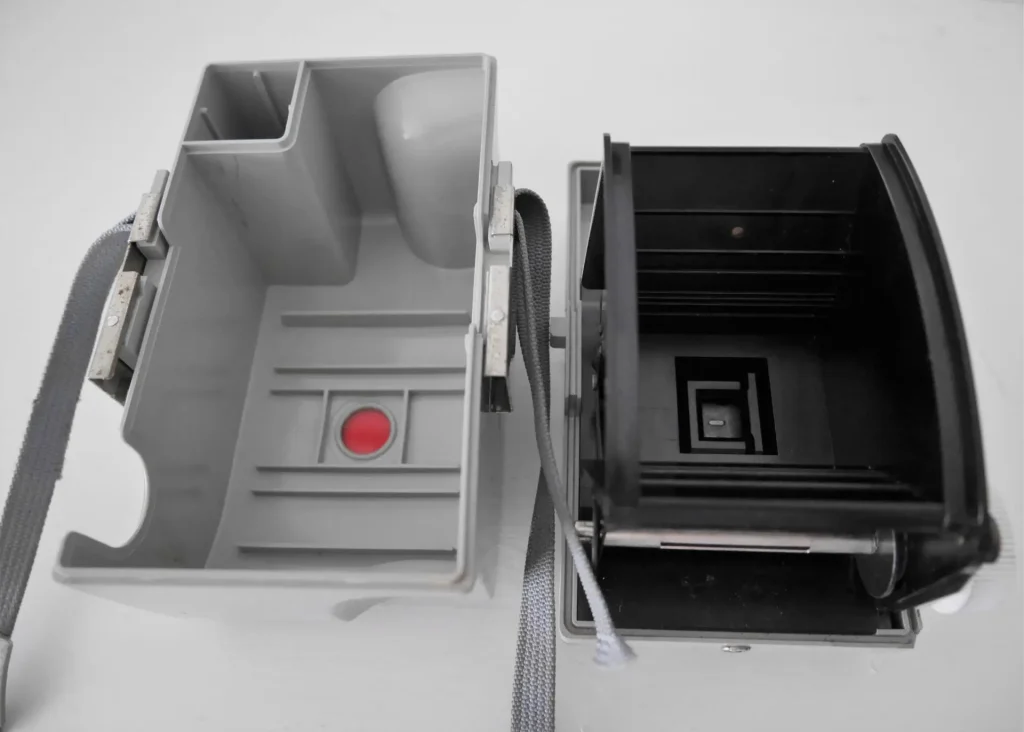
Despite the forward looking styling, once you start using the Vecta there’s no getting away from the fact it’s very basic with fixed focus, an aperture of f/14 and a shutter speed of maybe 1/30. Kodak obviously felt there was still a market for a simple plastic box camera that anyone could manage. The shutter button is on the front and below the lens, and is in the form of a white plastic bar. I found this placement a bit odd at first and on my example it’s quite stiff to operate so it’s difficult not to unintentionally move the camera when taking a photo.
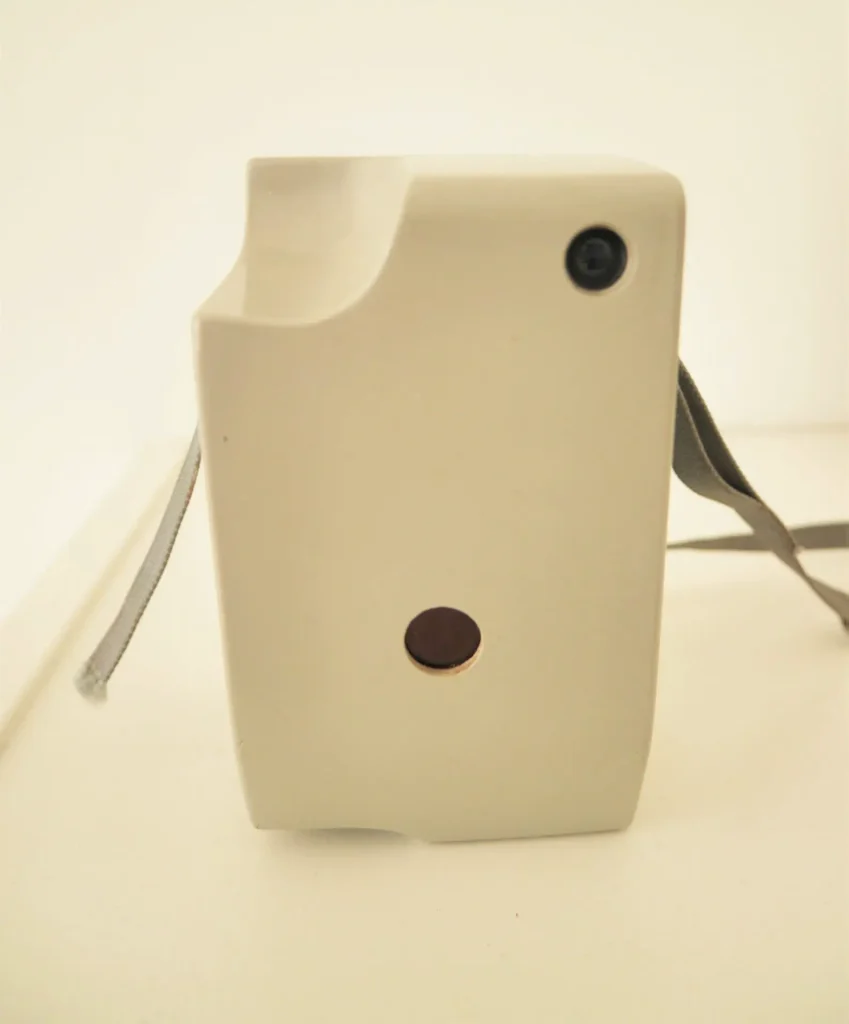
I wasn’t expecting good image quality out of the miniscus lens and with such a simple camera I had to think about what to photograph. I’d wanted to visit the William Henry Fox Talbot Museum at Lacock in Wiltshire for a while as he was a contemporary of Louis Daguerre and like him one of the pioneers of early photography. His home, Lacock Abbey, is now a National Trust property and the museum has been created in part of it.
As some of Fox Talbot’s earliest photographic experiments took place there, I thought to myself why not find the exact locations he used and, reproduce the same views with my camera? I discovered he also took photographs in Oxford so I should be able to find those locations too.
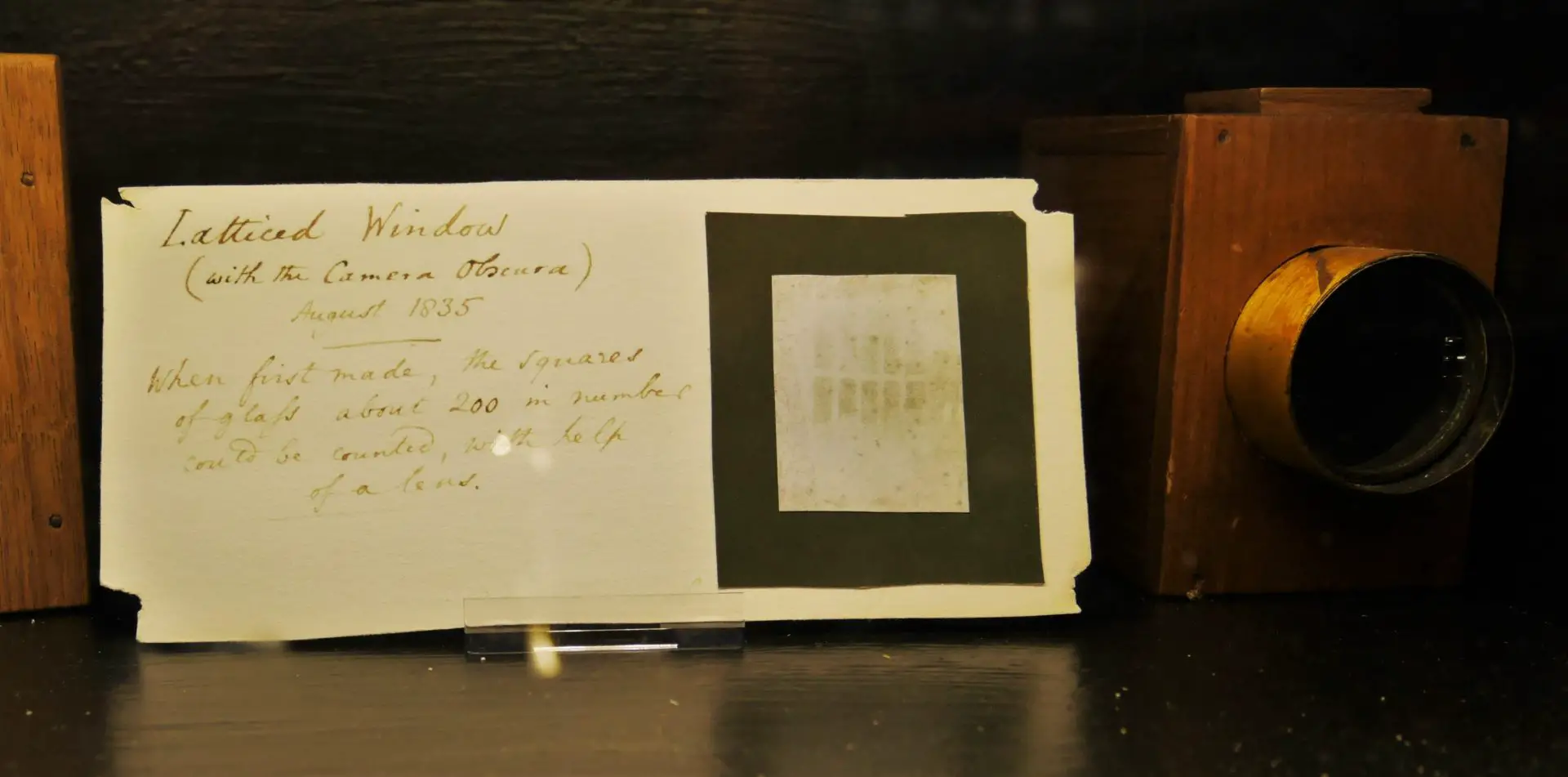
I’ve had the film developed inexpensively and the exposures are not great, which actually I’m not worried about because it’s what I expected. It was more the fun of locating the positions Fox Talbot had chosen to take his photos. It was an interesting and slightly surreal experience to be standing in the same spots seeing how comparatively little these scenes had changed after even about 180 years.
Here are the shots, Fox Talbot’s and then mine:
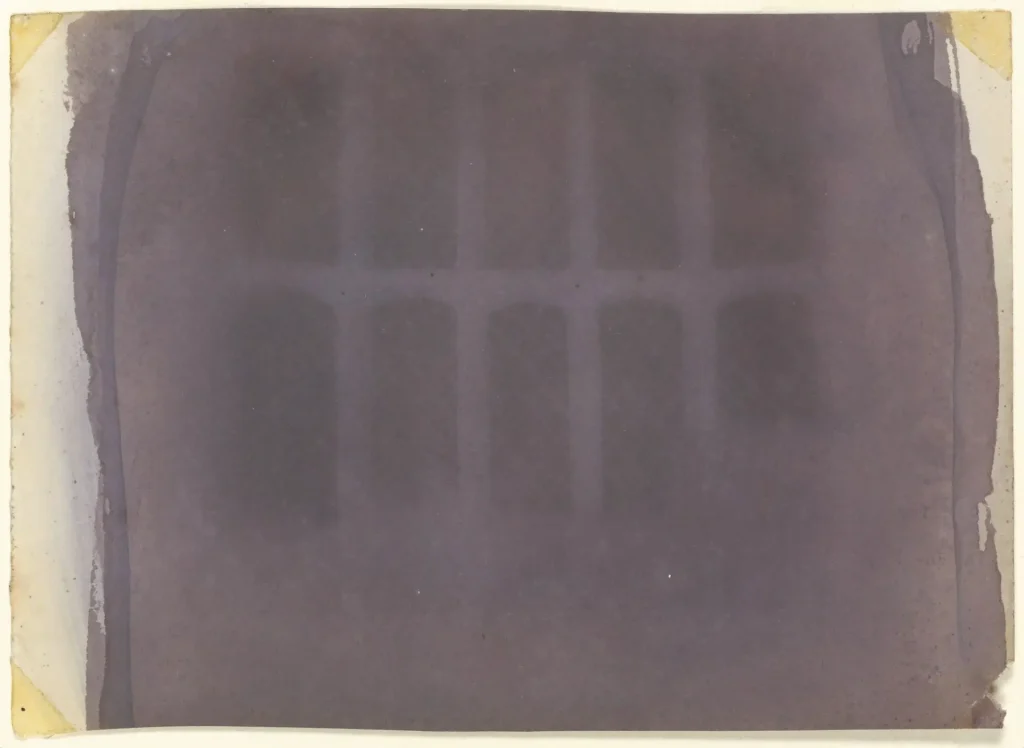
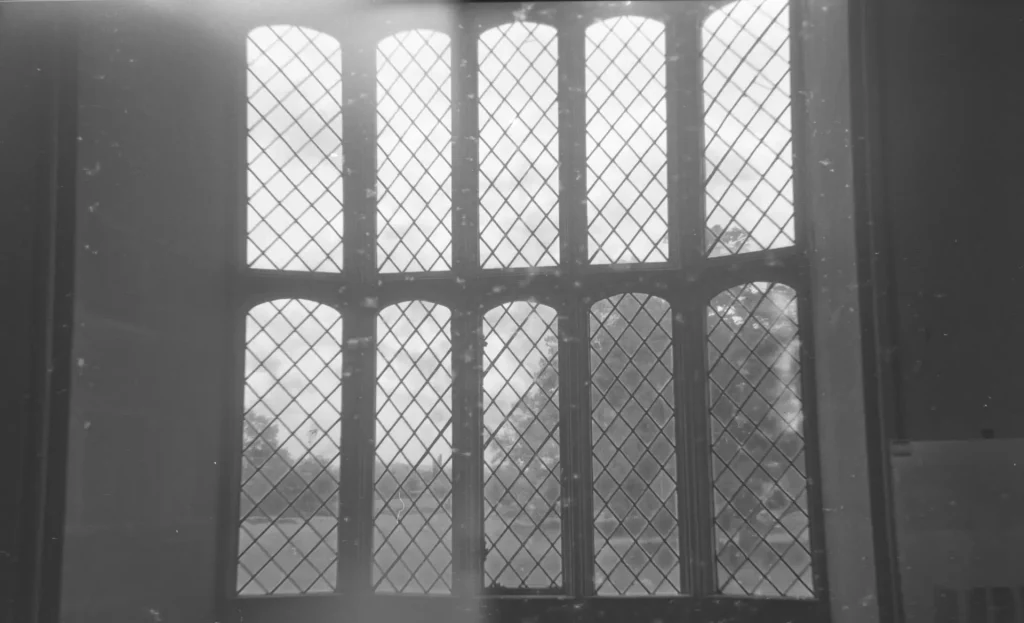
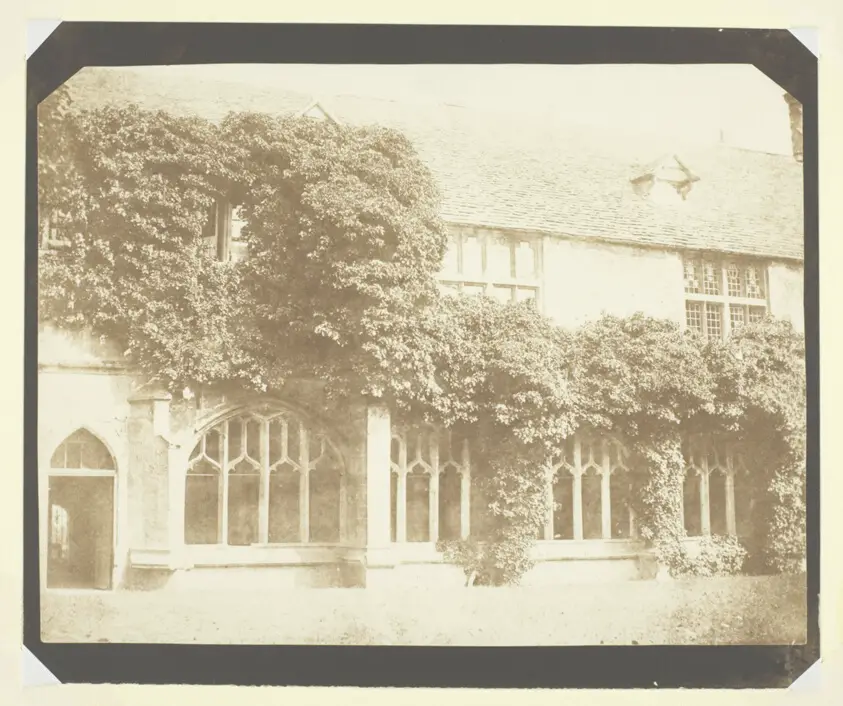
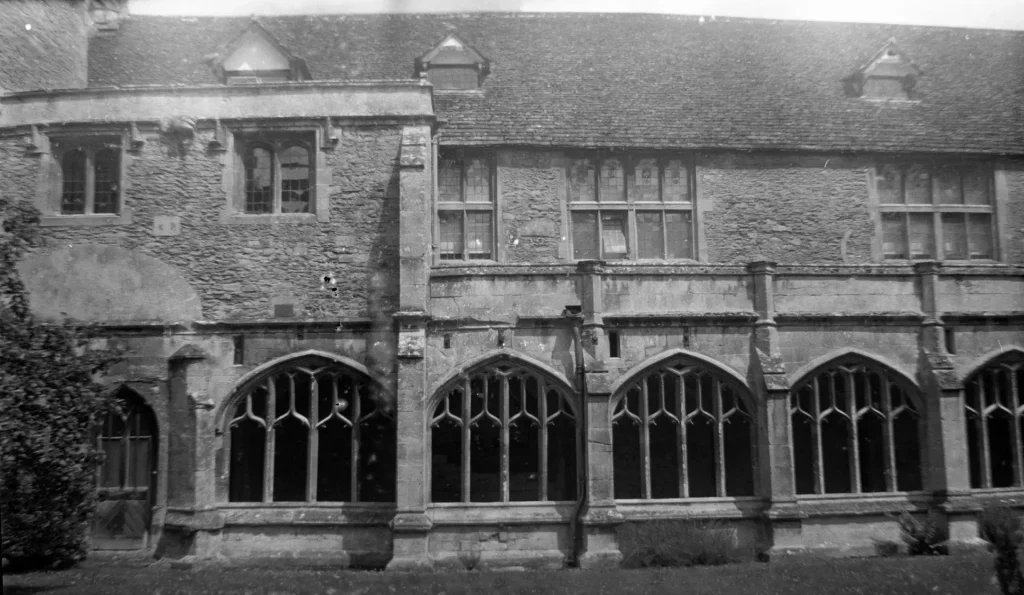
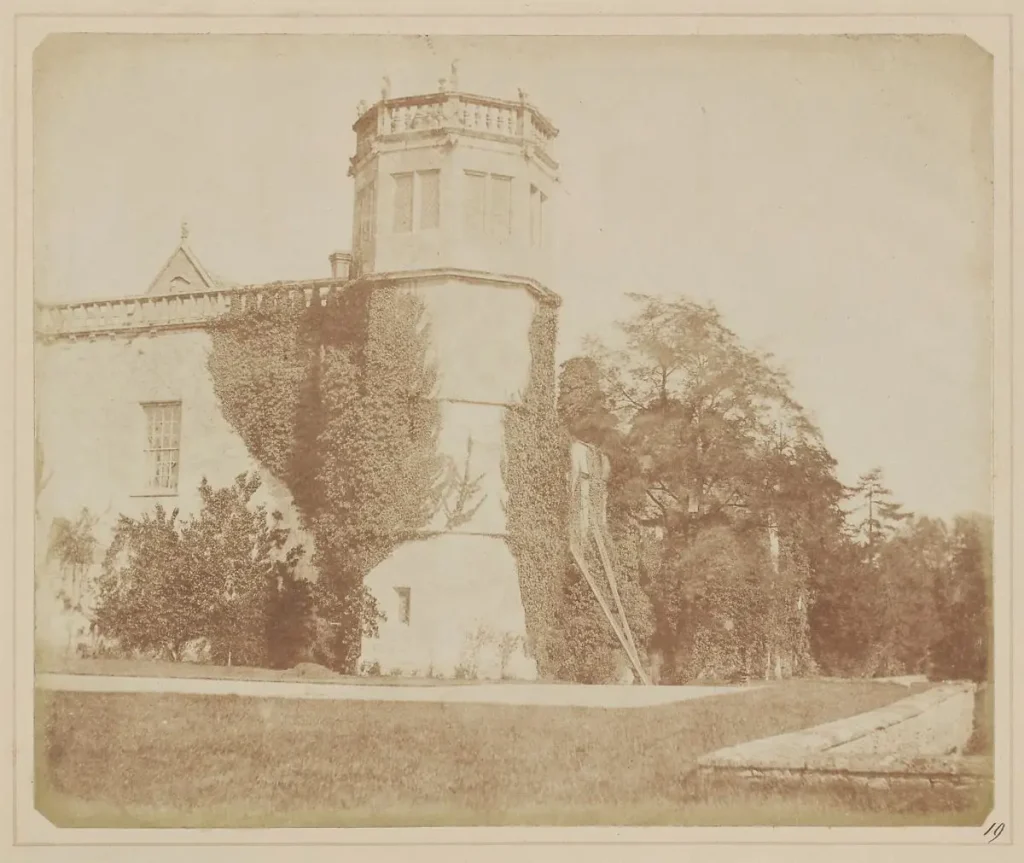
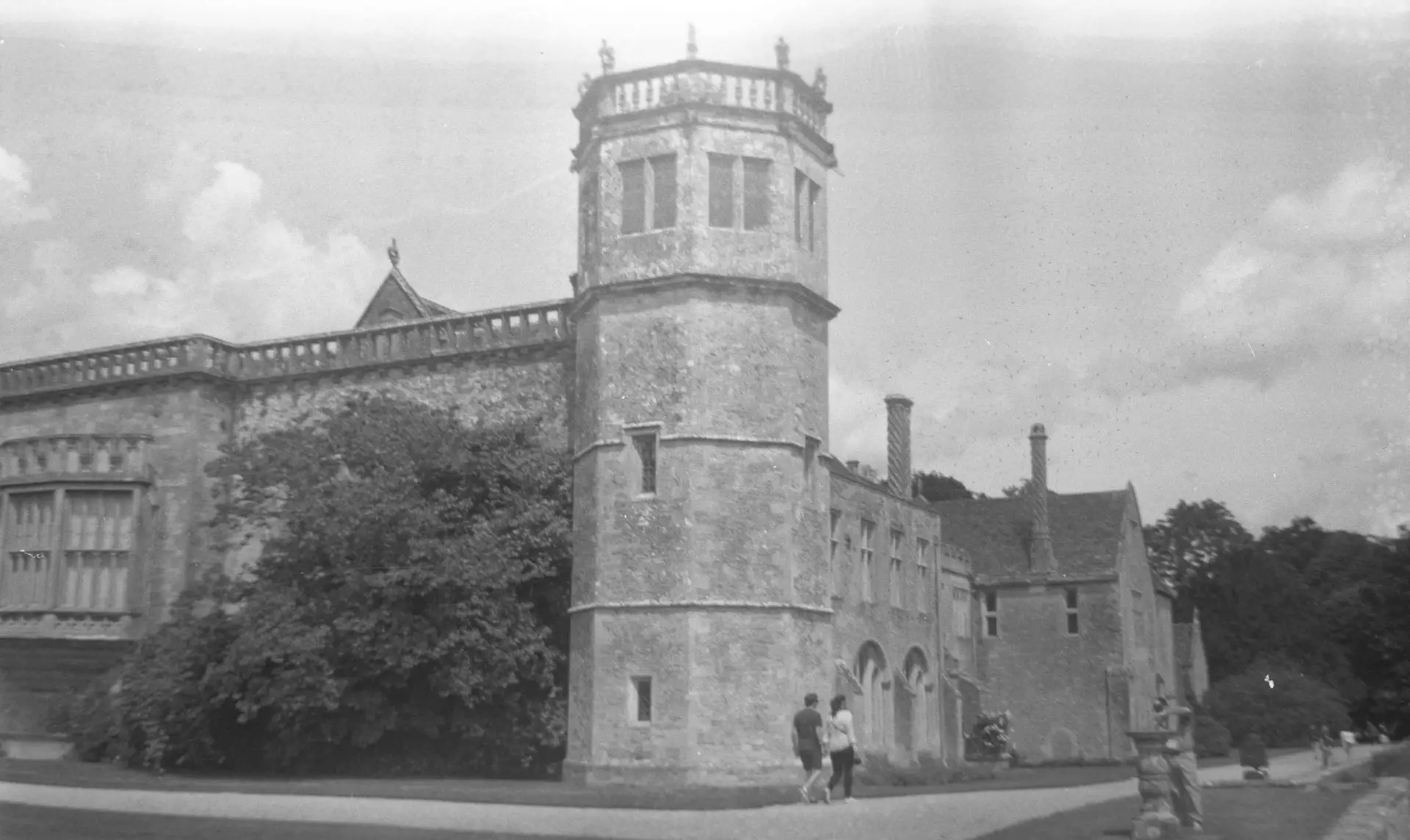

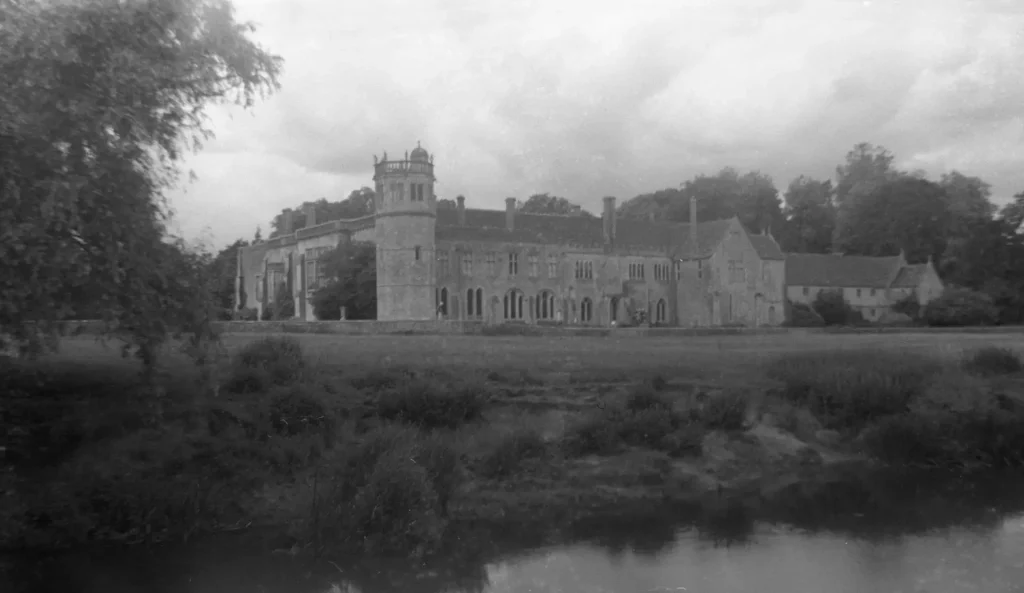
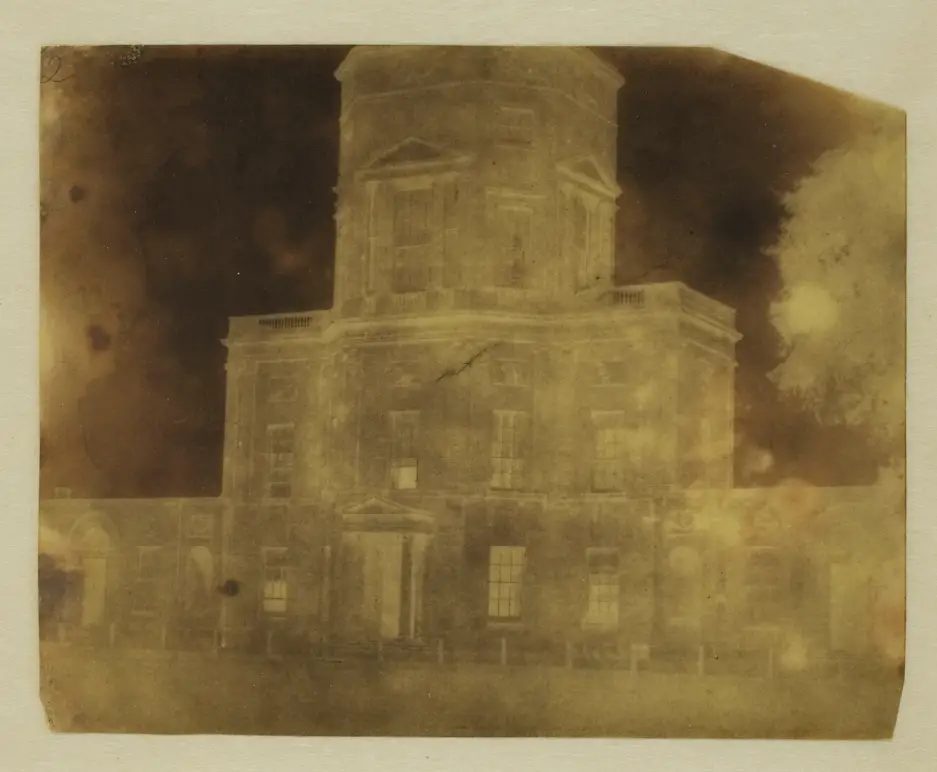
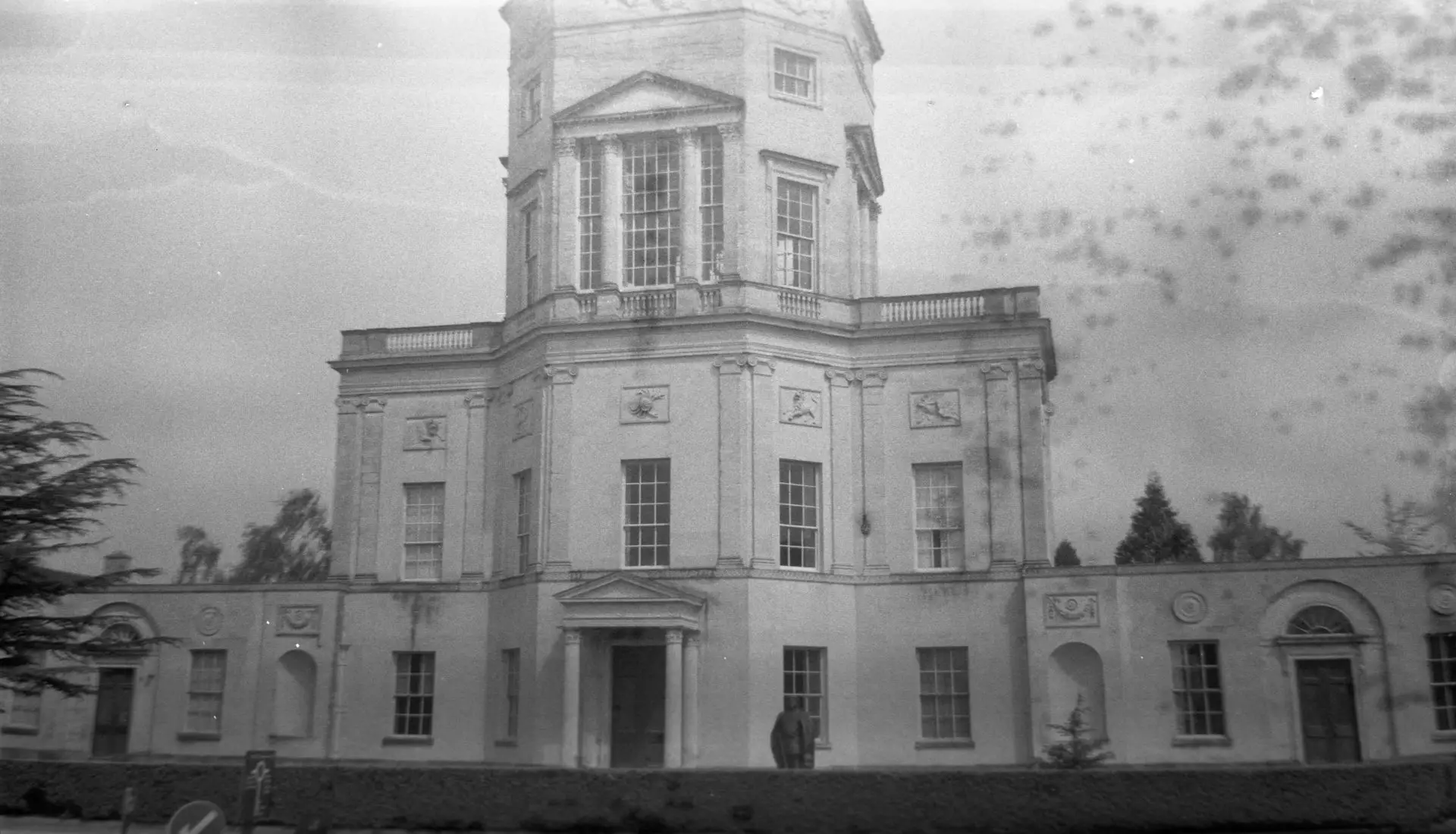
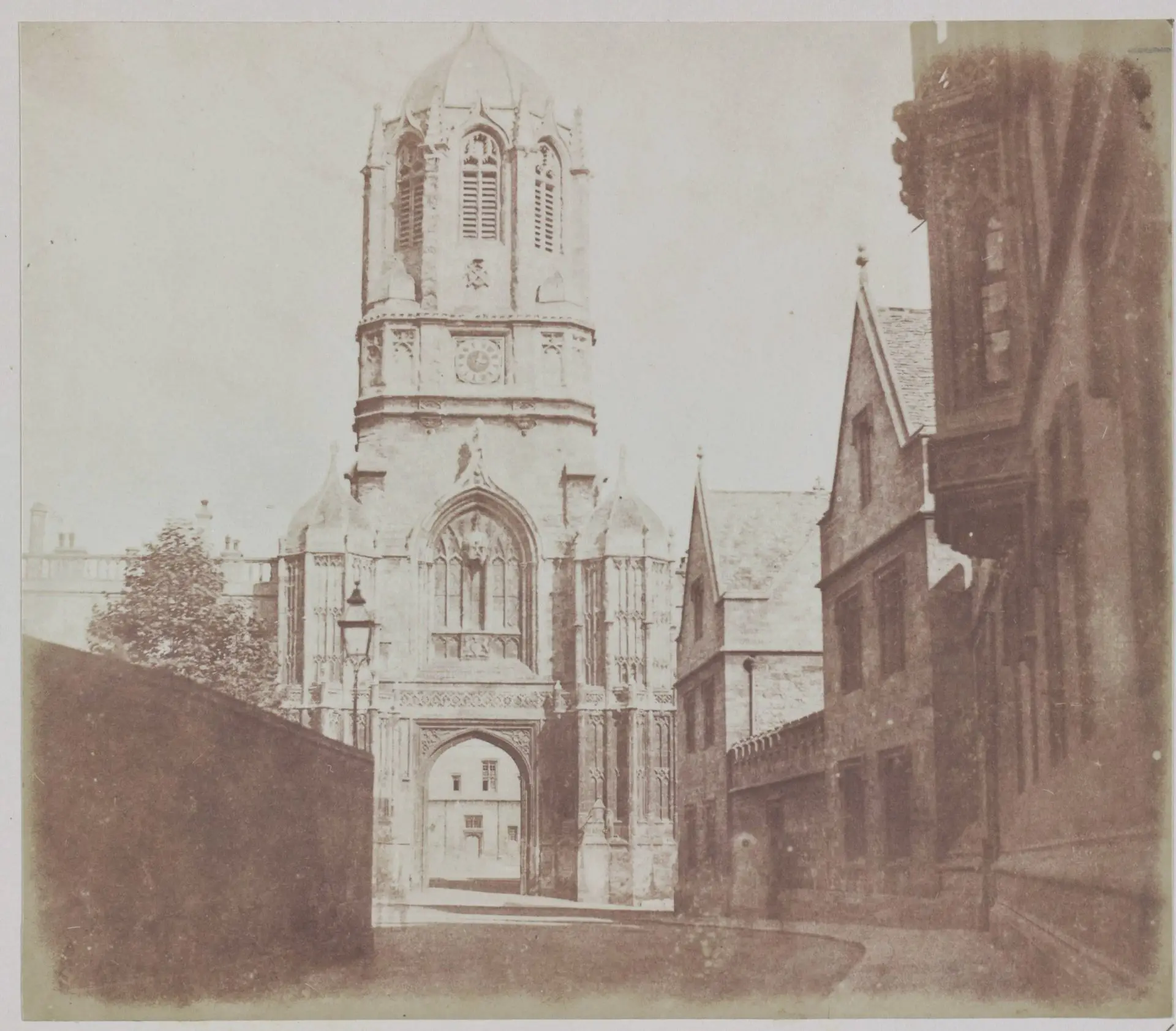
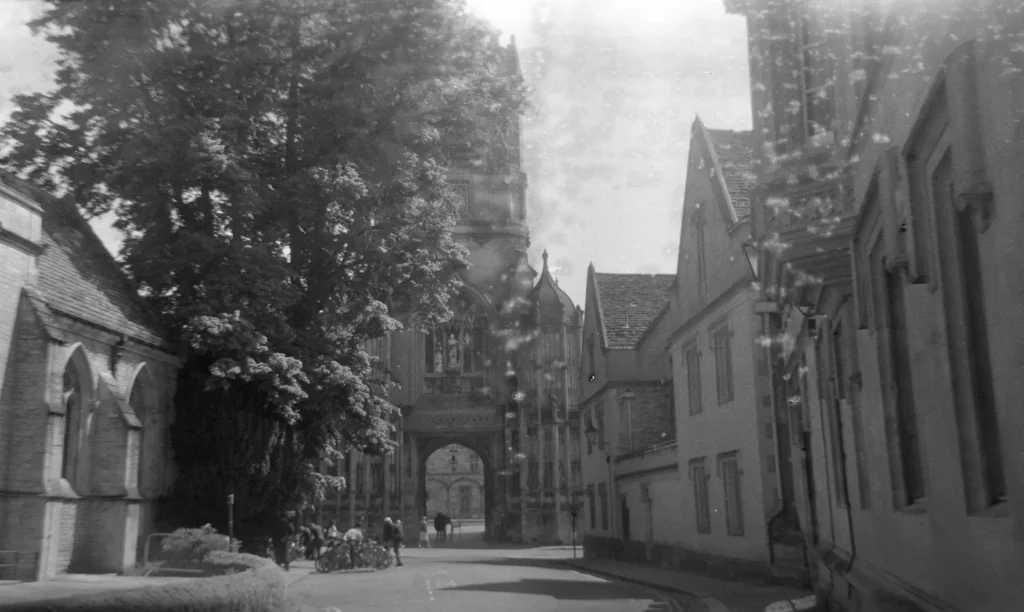
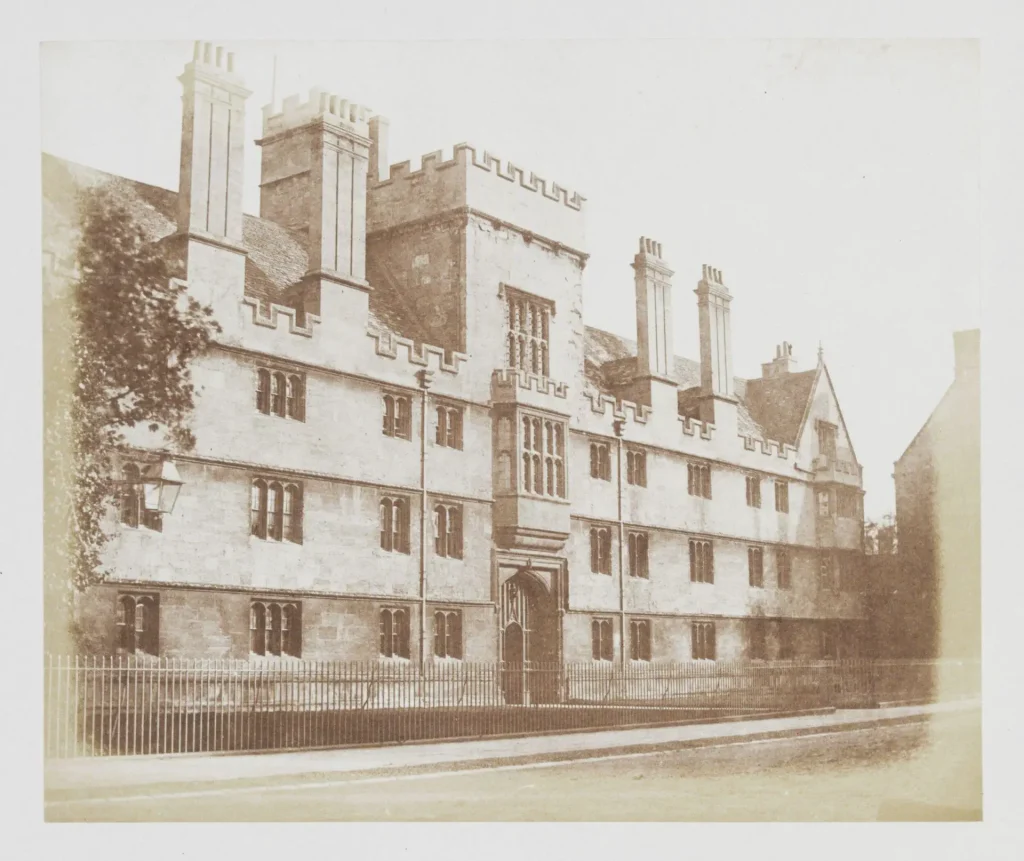
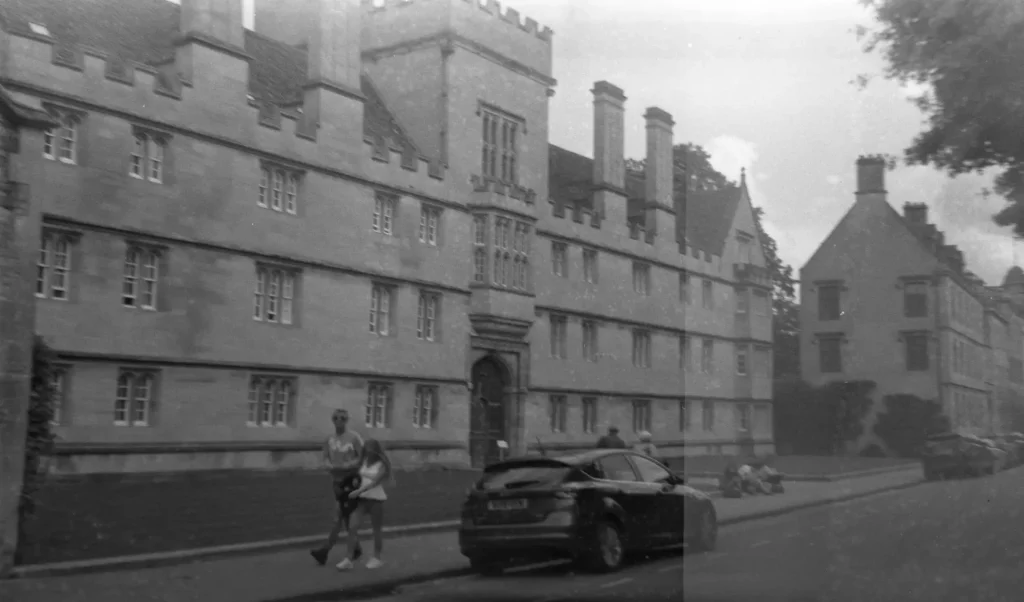
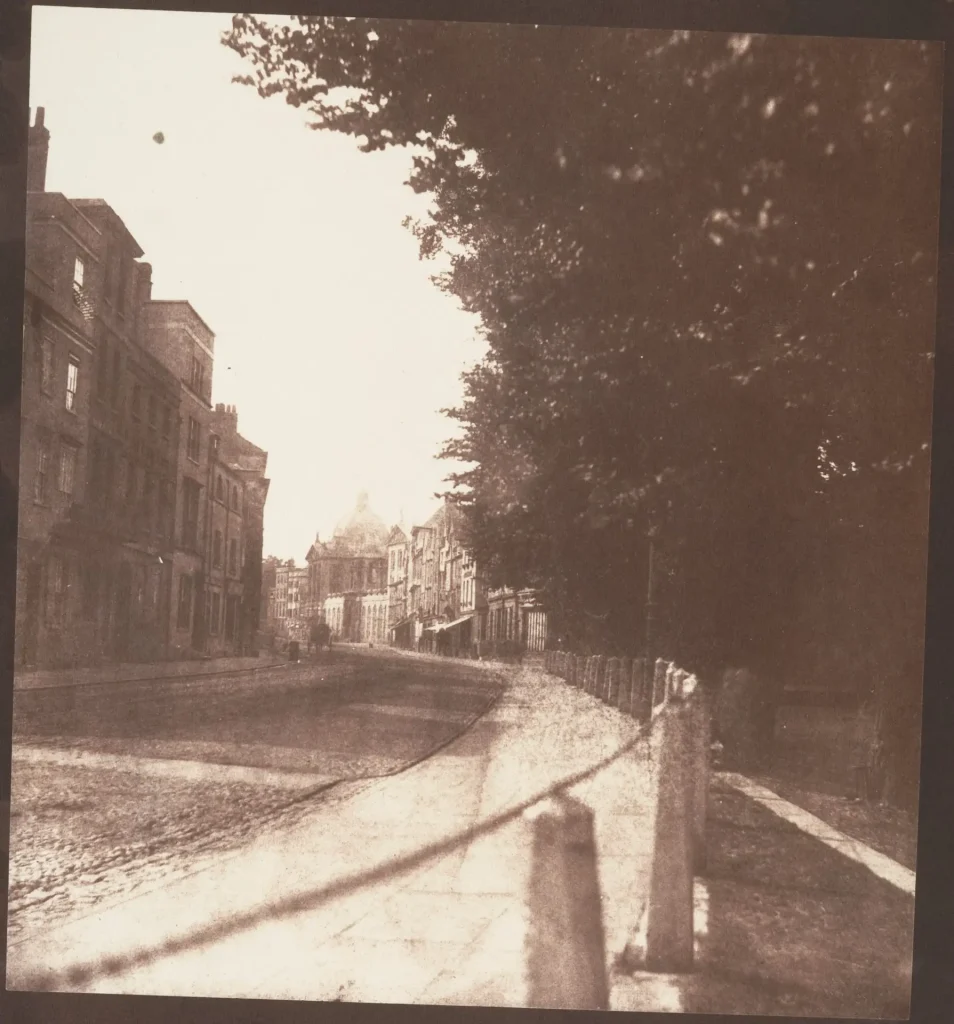
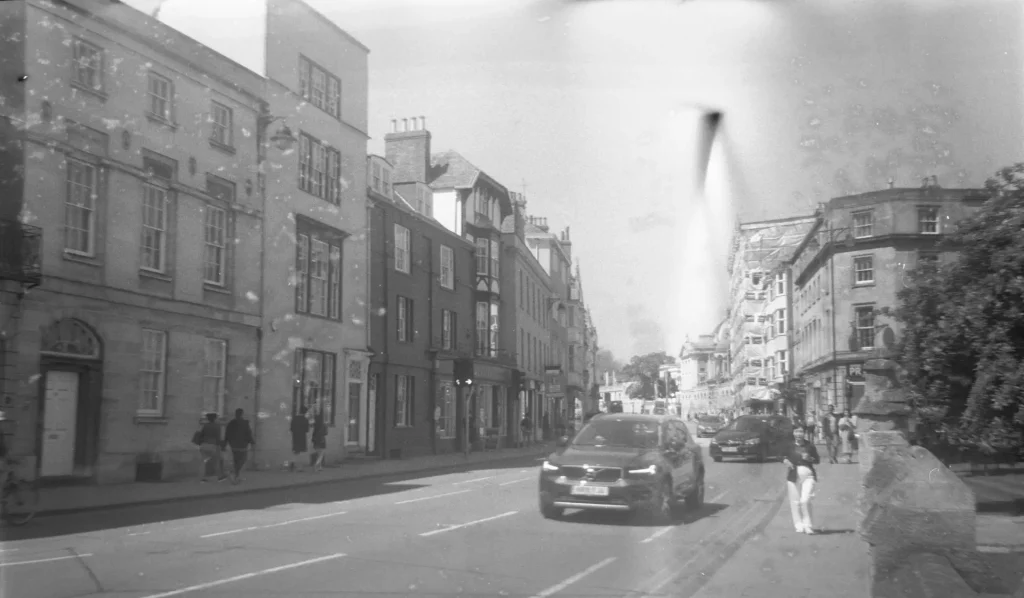
I like many of Kenneth Grange’s designs, but I’m not convinced this camera is one of his better ones. As I mentioned above, the position of the shutter button is unconventional and quite close to the lens. It was stiff – perhaps due to age – which didn’t help. Apart from that, it’s comfortable to hold. Also there’s no tripod socket, not that I’d use it, but then it’s a simple camera and has no shutter cable release thread which you would need. Winding the film on to the next frame required a surprising amount of force. The lens is pretty rubbish but to be fair to Sir Kenneth I doubt he had any control over that. To summarise, for me the Vecta is aesthetically an interesting camera that reflects the more progressive designs of the early 1960s, but I don’t plan on putting any more film through it.
Share this post:
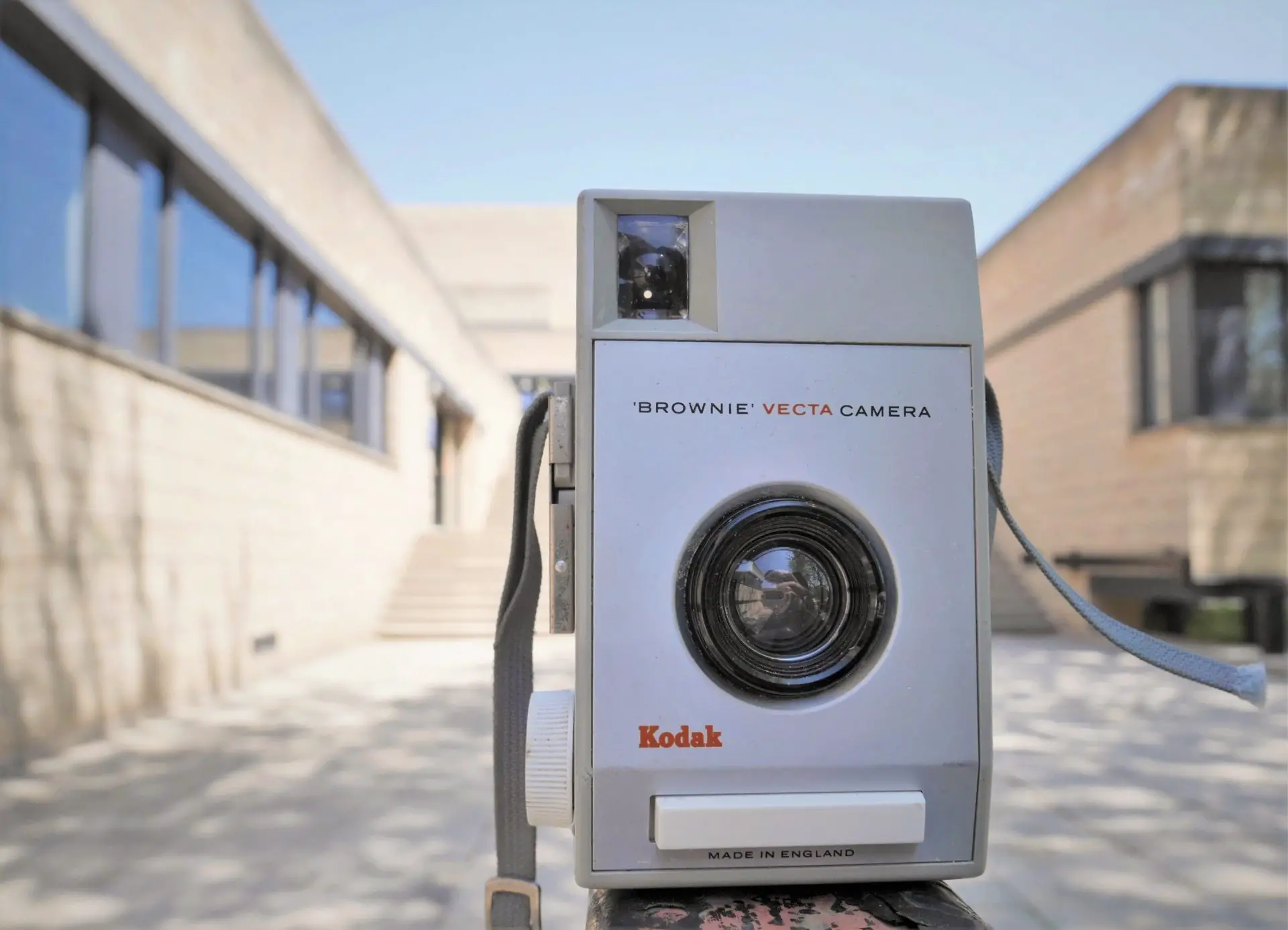








Comments
Terry B on Kodak Brownie Vecta and Following in Fox Talbot’s Footsteps – by Charles Higham
Comment posted: 10/08/2021
I was fascinated by how little has changed in your comparison images and which are separeated in time by some 150 years.
Comment posted: 10/08/2021
DaveP on Kodak Brownie Vecta and Following in Fox Talbot’s Footsteps – by Charles Higham
Comment posted: 10/08/2021
Comment posted: 10/08/2021
Charles Fehl on Kodak Brownie Vecta and Following in Fox Talbot’s Footsteps – by Charles Higham
Comment posted: 10/08/2021
Comment posted: 10/08/2021
Fred on Kodak Brownie Vecta and Following in Fox Talbot’s Footsteps – by Charles Higham
Comment posted: 10/08/2021
Comment posted: 10/08/2021
Howard Dale on Kodak Brownie Vecta and Following in Fox Talbot’s Footsteps – by Charles Higham
Comment posted: 11/08/2021
Comment posted: 11/08/2021
Michael Ward on Kodak Brownie Vecta and Following in Fox Talbot’s Footsteps – by Charles Higham
Comment posted: 12/08/2021
Comment posted: 12/08/2021
Toby Van de Velde on Kodak Brownie Vecta and Following in Fox Talbot’s Footsteps – by Charles Higham
Comment posted: 12/08/2021
Are you sure you won’t run another roll through it??
Comment posted: 12/08/2021